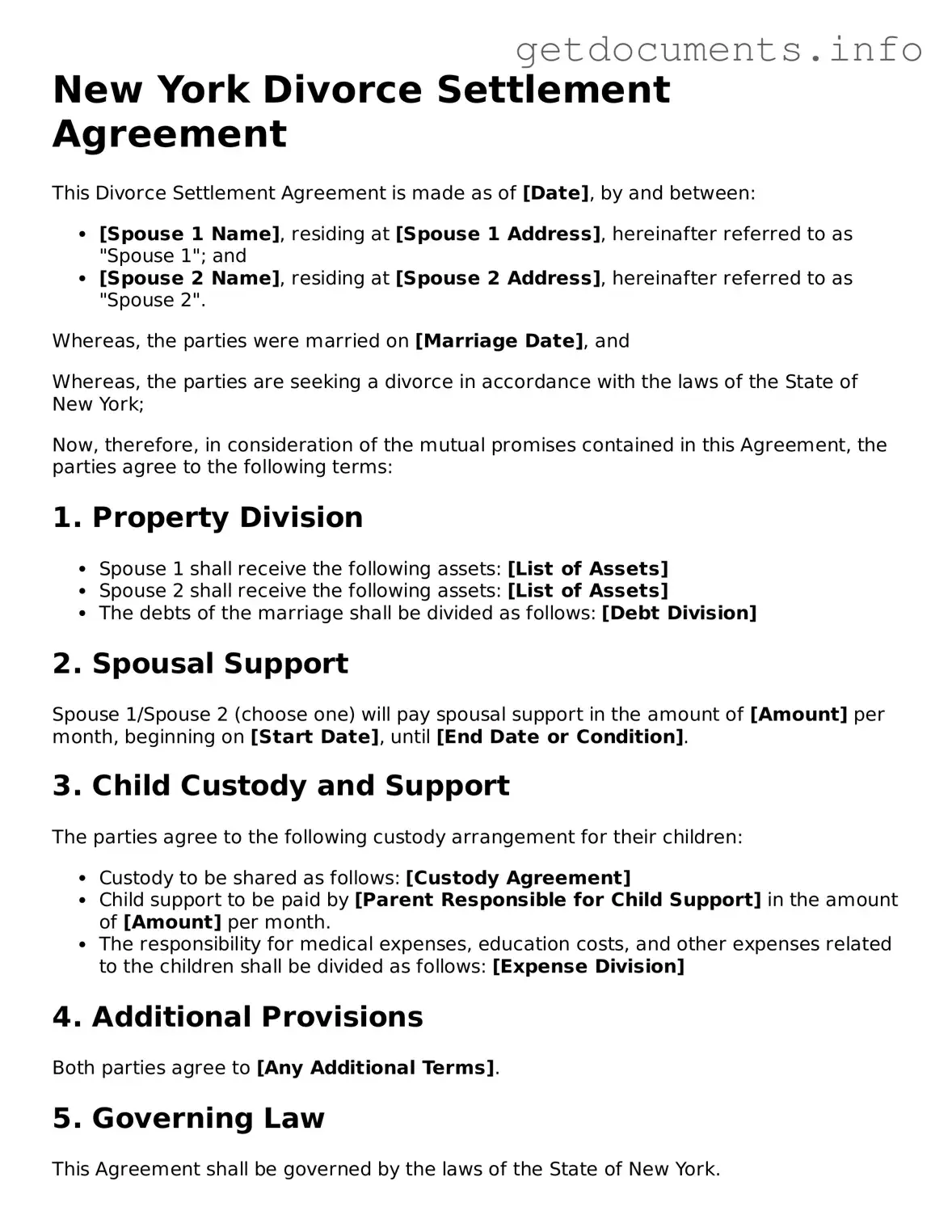Free Divorce Settlement Agreement Template for New York
The New York Divorce Settlement Agreement form is a legal document that outlines the terms and conditions agreed upon by both parties during a divorce. This form addresses various aspects, including asset division, child custody, and support obligations, ensuring that both individuals have a clear understanding of their responsibilities. For those navigating this process, filling out the form is a crucial step; click the button below to get started.
Access Divorce Settlement Agreement Editor
